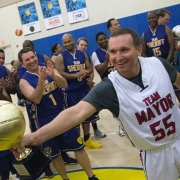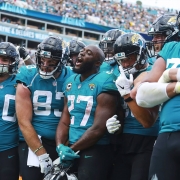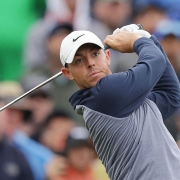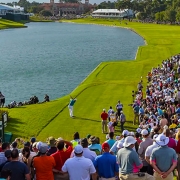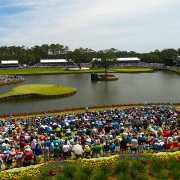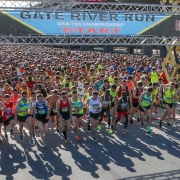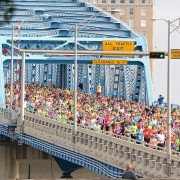Mayor Curry on Board With Sports
It was over forty years ago when Mayor Jake Godbold decided that Jacksonville’s image needed burnishing and the local citizenry needed their spirits lifted. He chose sports as a vehicle to promote city pride and invited Baltimore Colts’ owner Robert Irsay to town for the now-famous “Colt Fever.” Godbold was unfairly dubbed “Mayor Jock” because he was right: Sports can lift the spirit of a town and a professional sports team helps put a city on the map. His dream was realized in 1993 with the NFL awarding a franchise to Jacksonville and the city has flourished ever since.
Along with getting rid of tolls and the stench from the paper mills (once dubbed “The Smell of Money”) sports has been an integral part of North Florida’s growth from less than 500,000 people in 1980 to more than 1 ½ million residents.
Current Mayor Lenny Curry, now starting his second term, sees sports as a big driver for economic growth and creating a positive quality of life in North Florida
“The economic piece is important, these events drive bed tax, sales tax, they’re huge economic engines,” Curry said this week.
“But for me, sports is part of my ‘One City, One Jacksonville’ effort in the next four years,” he added. .
Curry’s not naïve about the deep divisions on either side of different roads and rivers in Jacksonville. He calls ‘One City, One Jacksonville’ “a fragile idea” that needs to be cultivated.
“We have a lot of work to do be one city as a people,” he explained. “But where we’ve come together is around a crisis like the hurricanes or around sports. Regardless of background or where you live, we all get together behind sports in town.”
On that he’s right.
A high school baseball and football player who was also on the weightlifting squad, Curry has run “The Gate” nearly 20 times and most mornings can be found in the Y before heading to City Hall.
He was eight years old when Colt Fever happened, “But I remember the USFL,” he said with a laugh. He famously watches the NFL Network’s morning show religiously and that network is regularly on one of the TV’s in his office.
He coached his son’s peewee football team before he went to middle school this year. Sports, fitness and recreation are not just a political platform: They’re a part of his life. And he wants it to be a part of yours as well.
“We put $150 million in the budget for infrastructure,” he noted. “And a lot of that is for sports and recreation.”
Curry would like to see bike trails expanded and more parks as part of everyday life in Jacksonville.
“When I coached my son, we practiced on city fields,” he explained.
The Mayor was there last Tuesday night when the city hosted the annual Florida/FSU baseball game at Bragan Field and helped celebrate Mike Martin’s 79th and final game in Jacksonville.
“FSU’s (football) is coming back here in late August, Georgia/Florida brings in $30 million to economy each year,” he said. “Anything where the numbers work, anytime we can do anything around sports an entertainment. It comes back to people being together.”
There’s a sense of urgency in Curry’s voice, knowing he only has four more years as Mayor to get things done. With sports, he’s focused on “leveraging” what’s already here and bringing in new events with broad-based appeal.
“We feel a sense of urgency,” he said. “You’ll see some pretty aggressive stuff. My first year in office we got Daily’s place done right away.”
Curry says his office is “aligned” with the Jaguars and owner Shad Khan. He’s been instrumental in acquiring the funding to take down the Hart Bridge ramps near the stadium to help facilitate Khan’s vision of the Shipyards and the Lot J entertainment complex.
“Shad’s relationships as an international businessman bring a lot to the table,” Curry explained. “And he loves Jacksonville.”
As Mayor, Curry is on board with Khan’s desire to bring the NFL Draft to Jacksonville and Daily’s Place. He went to the draft last year in Dallas and was asked to spend some time with NFL Commissioner Roger Goodell.
“So we’re on their radar,” he explained.
One bonus for Curry’s time in office is his relationship with the PGA Tour and The Players Championship.
“They heavily supported my re-election,” Curry said of the PGA Tour and Commissioner Jay Monahan. “I know it’s in St. Johns County but I think of it as a ‘City of Jacksonville’ event. The city and The Players have had a better relationship in the last four years. All I see from them is an intention to be unified and branded.”
As with any term-limited politician, Curry’s first four years were part feeling-out process, part accomplishments. In his next four years, he hopes to take steps toward downtown to make it presentable residents and visitors alike. Khan’s plans for the area around the stadium and a Four Seasons Hotel on the river are part of that vision.
“We have opportunities to leverage what we have,” he said of the future. “There’s so much we can expand on”
“The first four years have been a turnaround,” he explained. “We’ve solved the pension, we’re financially stable. We have the financial wherewithal to do things around sports. So stay tuned.”

